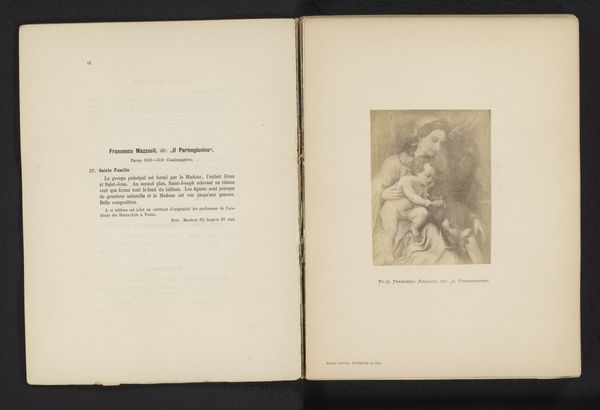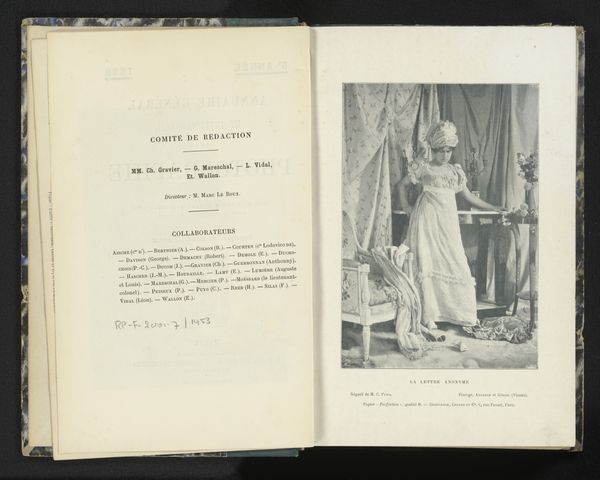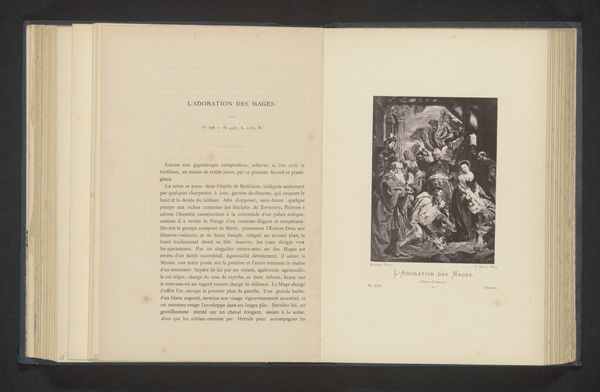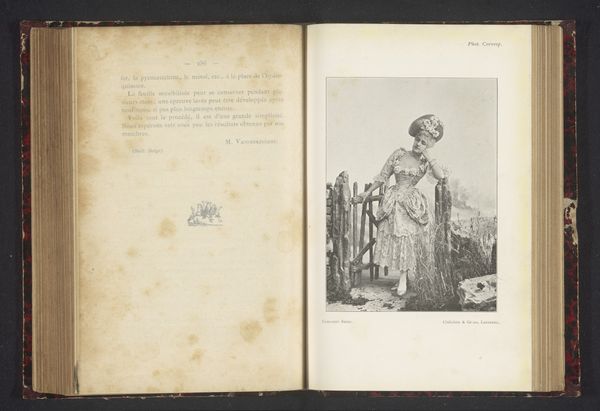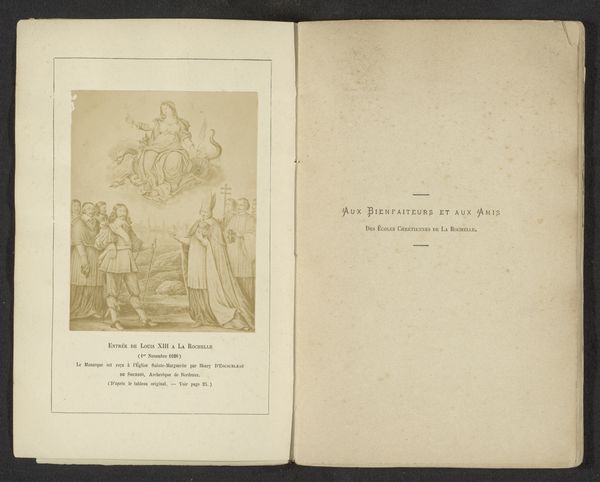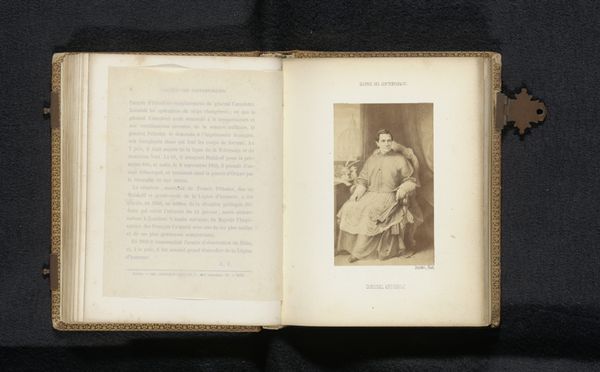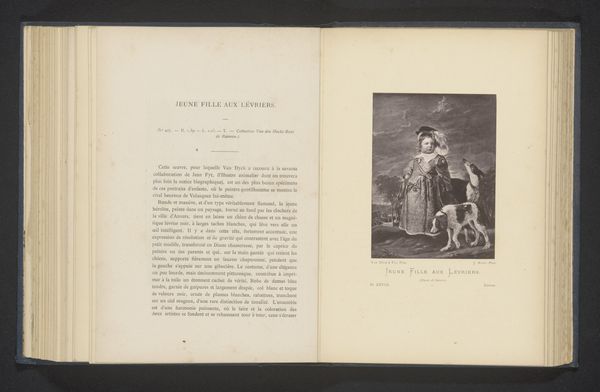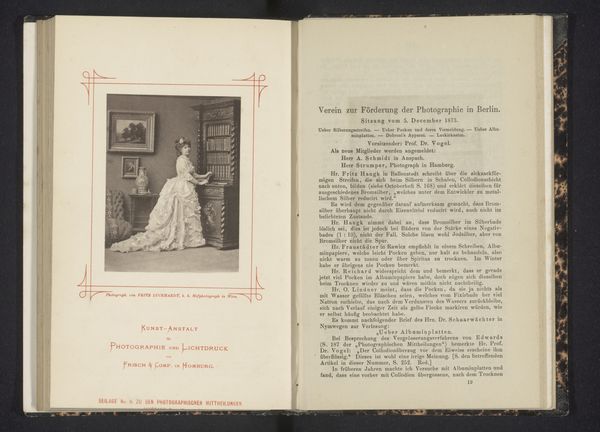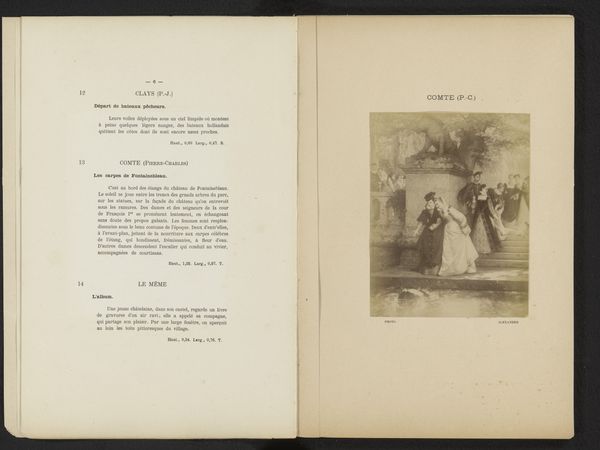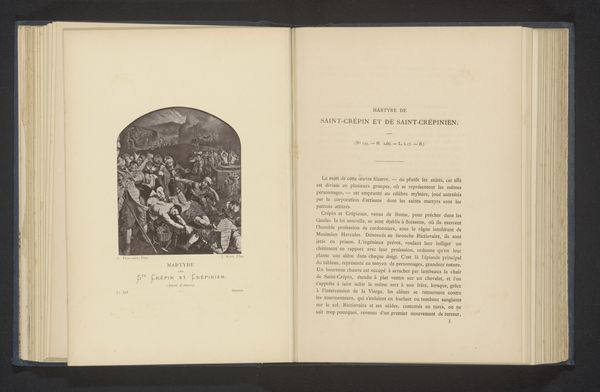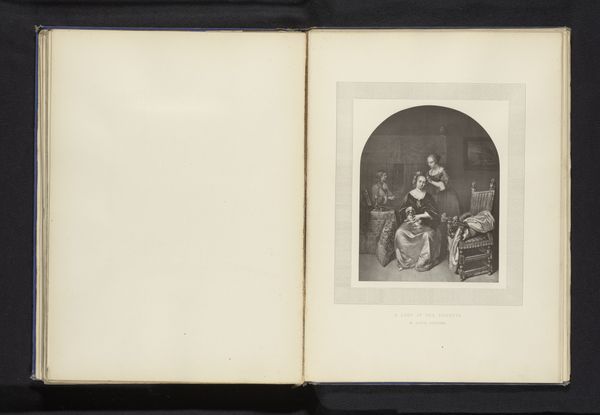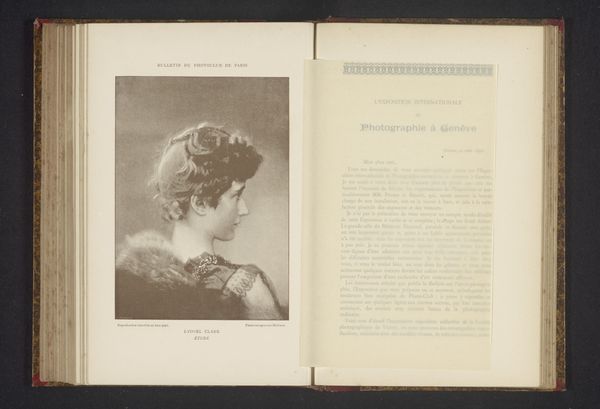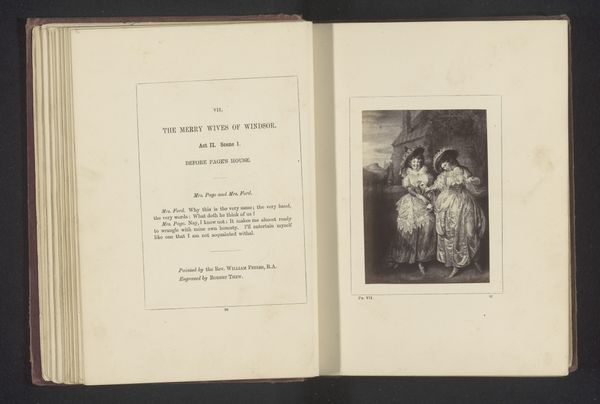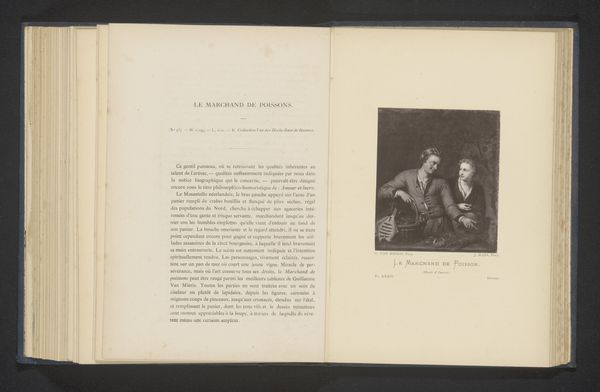
print, photography
#
type repetition
#
aged paper
#
paperlike
# print
#
typeface
#
photography
#
journal
#
thick font
#
script guideline
#
paper medium
#
historical font
#
columned text
Dimensions: height 182 mm, width 120 mm, thickness 25 mm
Copyright: Rijks Museum: Open Domain
Curator: I’m immediately drawn to the cover’s image: that photoglyptie illustration evokes such a cozy, old-world feeling, doesn't it? The lighting is gentle, almost as if memory itself is being illuminated. Editor: Indeed, it’s an interesting visual. Considering "La photographie," printed in 1882 and authored by Gaston Tissandier, let's acknowledge the potential contradiction between the visual—which seems to depict traditional, almost rural domesticity—and the radical innovation of photography itself. Who was this book intended to serve, and what conceptions of progress were at play here? Curator: A compelling point. To me, the image inside speaks of something universally human – warmth, family, simple nourishment. It has a very tactile sensibility that comes through strongly and makes one wonder what photography meant at that moment in time and who it was designed for. Editor: Absolutely. Examining its title and time of origin is key. During this era, photography's relationship to power, visibility, and representation were deeply entwined with emerging technologies of surveillance and control and rapidly advancing science that wasn’t evenly spread in terms of the haves and have-nots. Whose reality was being photographed, and how was that shaping our understanding of society? It appears that "La Photographie" offered an intriguing window into late 19th-century social dynamics. The distribution and content was more likely centered in the upper levels of European society at the time. Curator: You’re right, understanding who the book served initially brings the questions around how technologies alter our perception and participation into stark relief. A picture, supposedly telling a thousand stories… yet whose stories were given the platform to be seen and shared? I'm certain each encounter adds further depth. Editor: Precisely! As it encourages one to question, perceive, and contextualize images beyond their mere aesthetic appeal, revealing deeper historical implications of science and technology across time and space. Thank you.
Comments
No comments
Be the first to comment and join the conversation on the ultimate creative platform.
